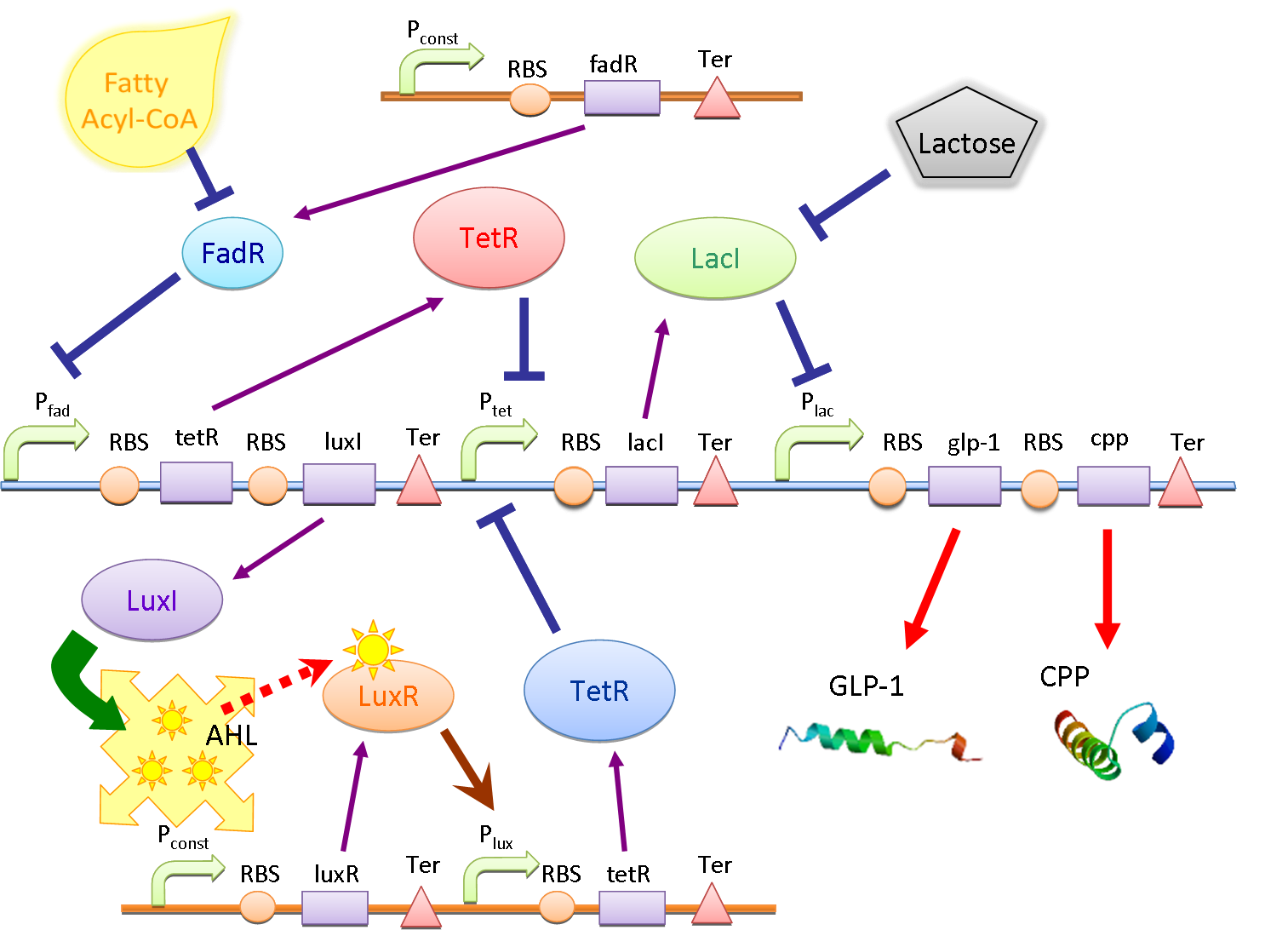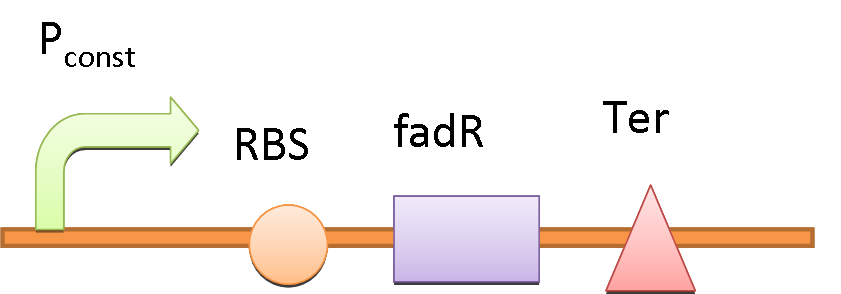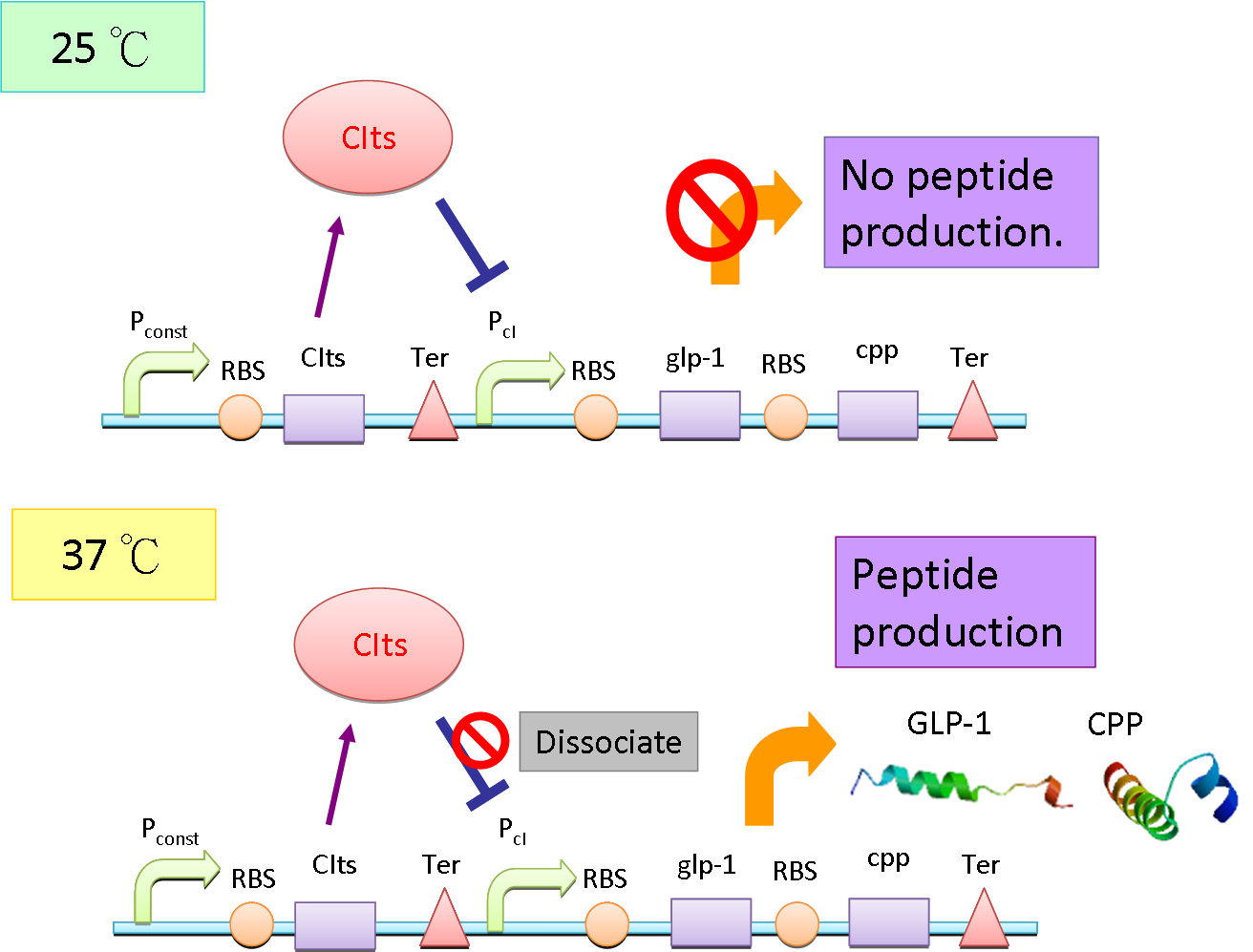Team:NTU-Taida/Project/Circuit
From 2012.igem.org
Circuit
Two kinds of circuit of different delivery modes are described here. For Fat Extinguisher, a fatty acid inducible circuit with double repressors and quorum sensing module is tailored for anti-noise high band filter and prolonged and amplified response. For Brain Guardian, a temperature-sensitive circuit is designed to maintain constitutive delivery inside the human body.
Contents |
Fatty Acid Inducible Circuit
The main circuit is designed to detect the presence of fatty acid in the intestinal environment and produce GLP-1 and CPP as response, aiming to reduce the appetite of hosts and alter their eating behavior for treatment of obesity and metabolic syndrome. There are two core modules: double repressors and quorum sensing.
Double Repressors
The double repressor module is designed to produce a sharpened threshold of the response (as demonstrated in the Modeling section). It consists of the genes encoded Tet Repressor Protein (tetR) and lac reprresor (lacI). We put tetR downstream of fad promoter (Pfad) and lacI downstream of tet promoter (Ptet). The DNA sequence encoded GLP-1 and CPP are placed downstream of lac promoter (Plac).
In the absence of fatty acid, a constitutive expressed fatty acid metabolism regulator protein FadR binds to Pfad, which represses the transcription of tetR and makes Ptet free of TetR. Therefore LacI is expressed, binds to Plac and blocks the production of GLP-1 and CPP. After intake of a fat-rich meal, the fatty acid biosensor FadR is inhibited by the fatty acyl-CoA, which leads to the expression of TetR. The repression of the transcription of lacI by TetR frees the Plac from LacI and leads the final production of GLP-1 and CPP.
When there is lactose in the intestinal environment (after drinking milk), the lactose can halt the repression of Plac directly by binding to LacI. GLP-1 and CPP can also be produced in this case.
Quorum Sensing
In order to amplify the response and to recruit other bacteria to work together when there are only a few of bacteria sense the fatty acid, a quorum sensing system is also included in our circuit. We place luxI downstream of Pfad and another tetR downstream of lux promoter (Plux). At the same time, the expression of LuxR is constantly driven by a constitutive promoter. When a single bacterium detects the fatty acid, LuxI is expressed and it catalyzes the synthesis of N-Acyl homoserine lactone (AHL). AHL activates the LuxR and binds to Plux, results in extra expression of TetR and amplifies the production of GLP-1 and CPP. AHL can be released into the environment and other bacteria that uptake the AHL can be recruited and start producing GLP-1 and CPP as well.
Circuit for Constitutive Delivery
We use the backbone of BioBrick BBa_K098988 with temperature-sensitive cI repressor (CIts) and modified cI promoter regions (as mentioned in the Sensor section). GLP-1 and CPP are put under the control of the modified cI promoter. While the PEPDEX is outside the body, the expression of the peptides is repressed by the CIts. After administrated in the intestine, CIts detaches from the promoter due to the rising in temperature from room temperature to body temperature, resulting in constitutive delivery of GLP-1 for neuroprotective function.
 "
"







